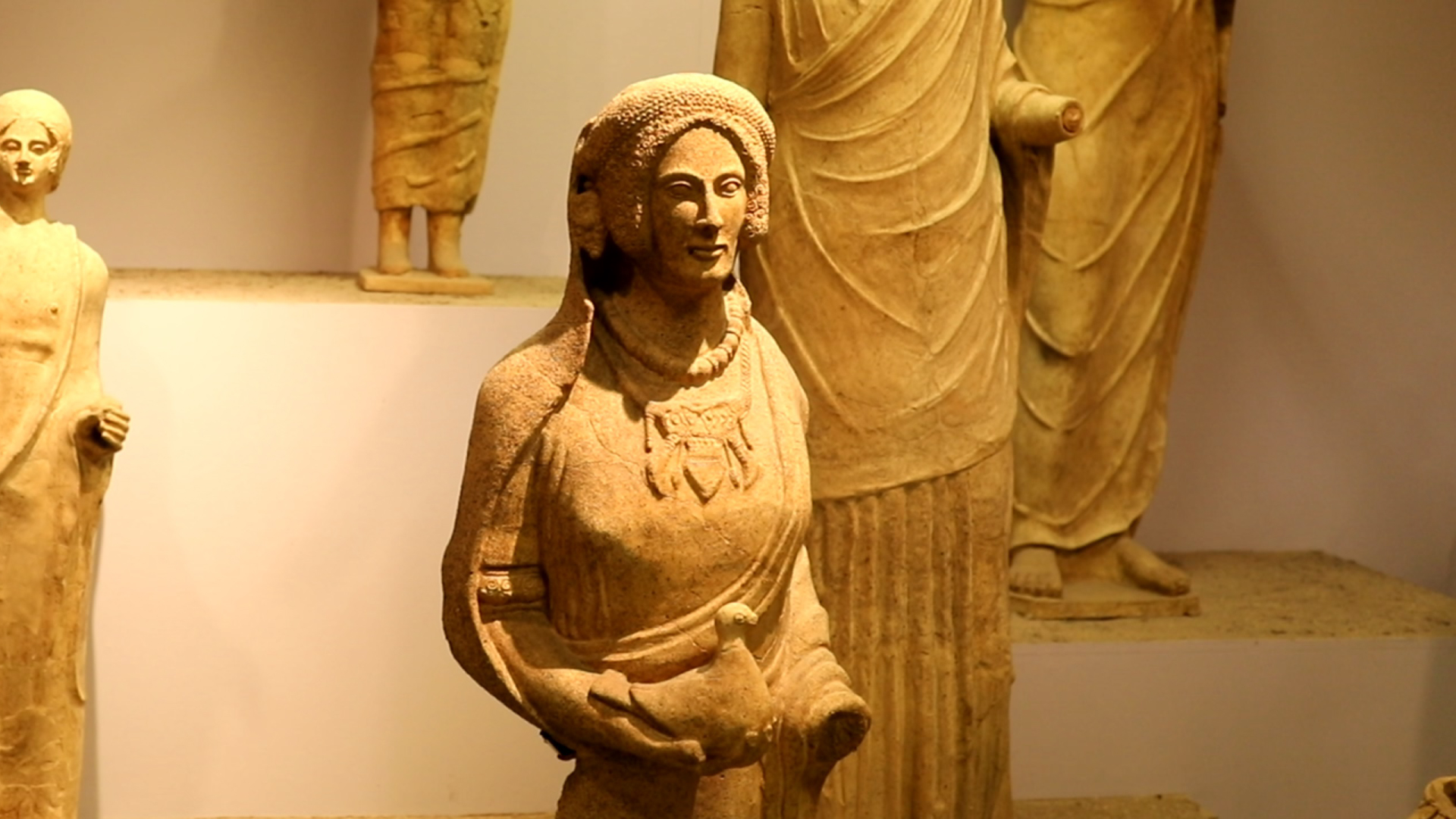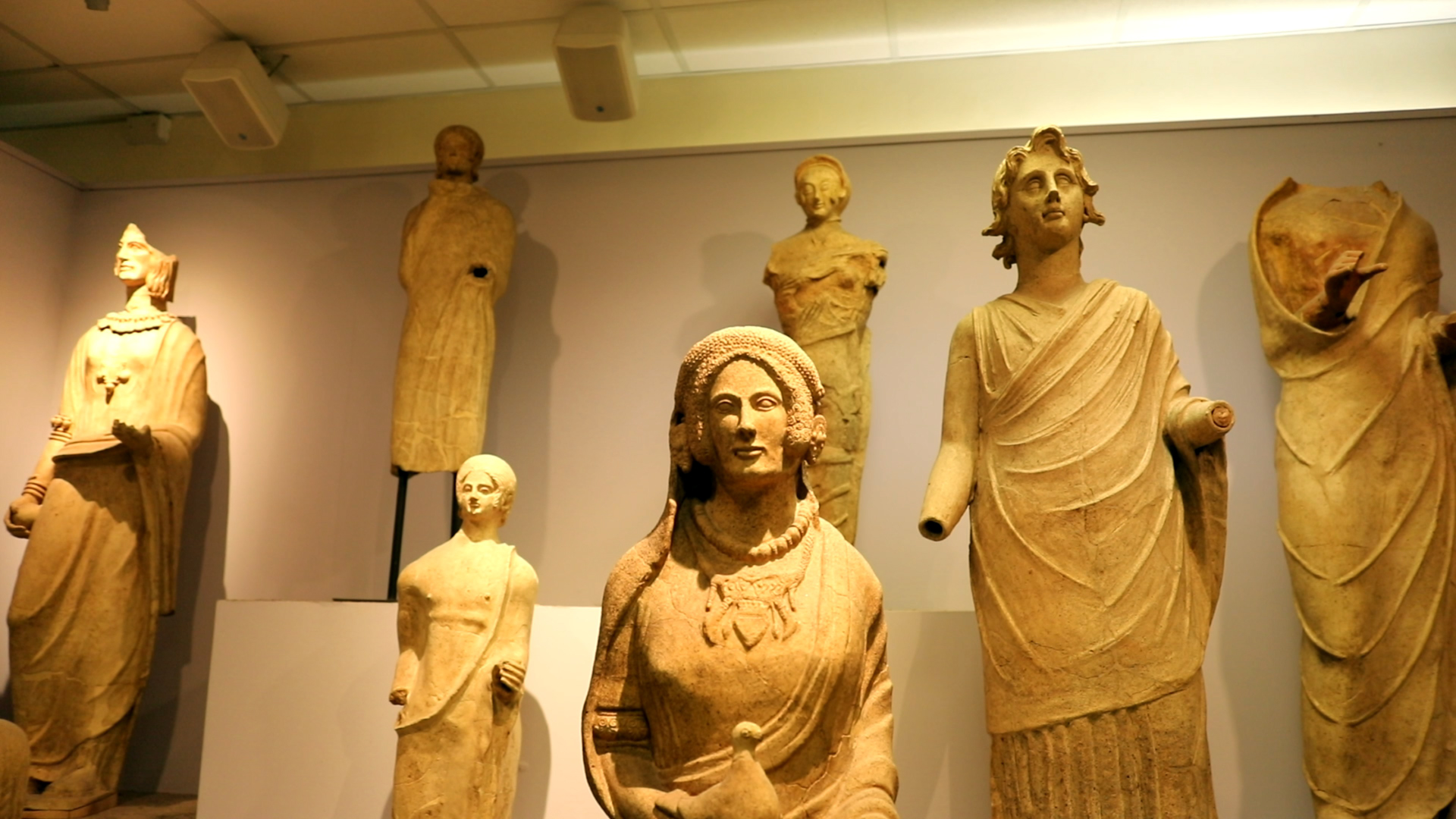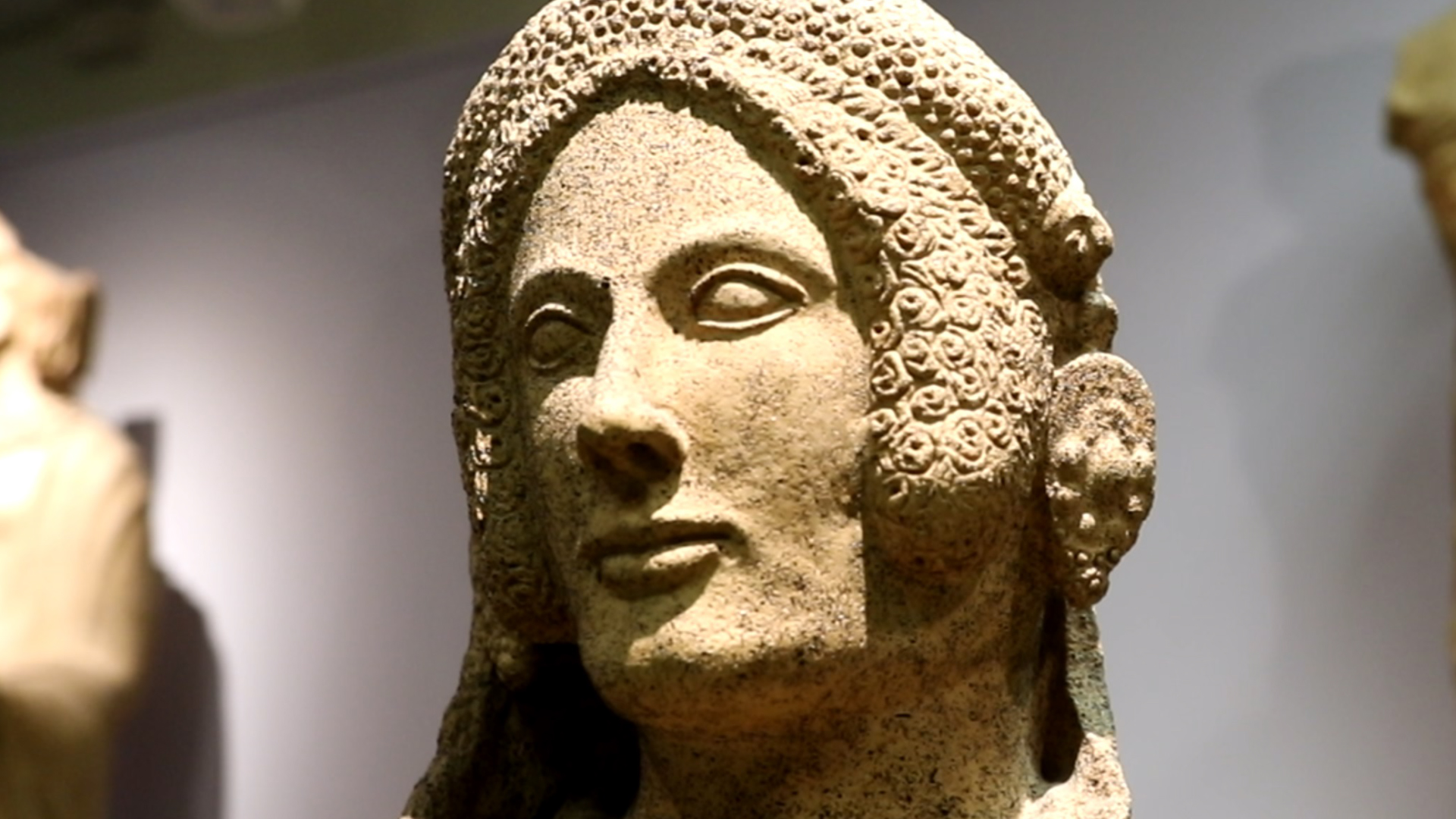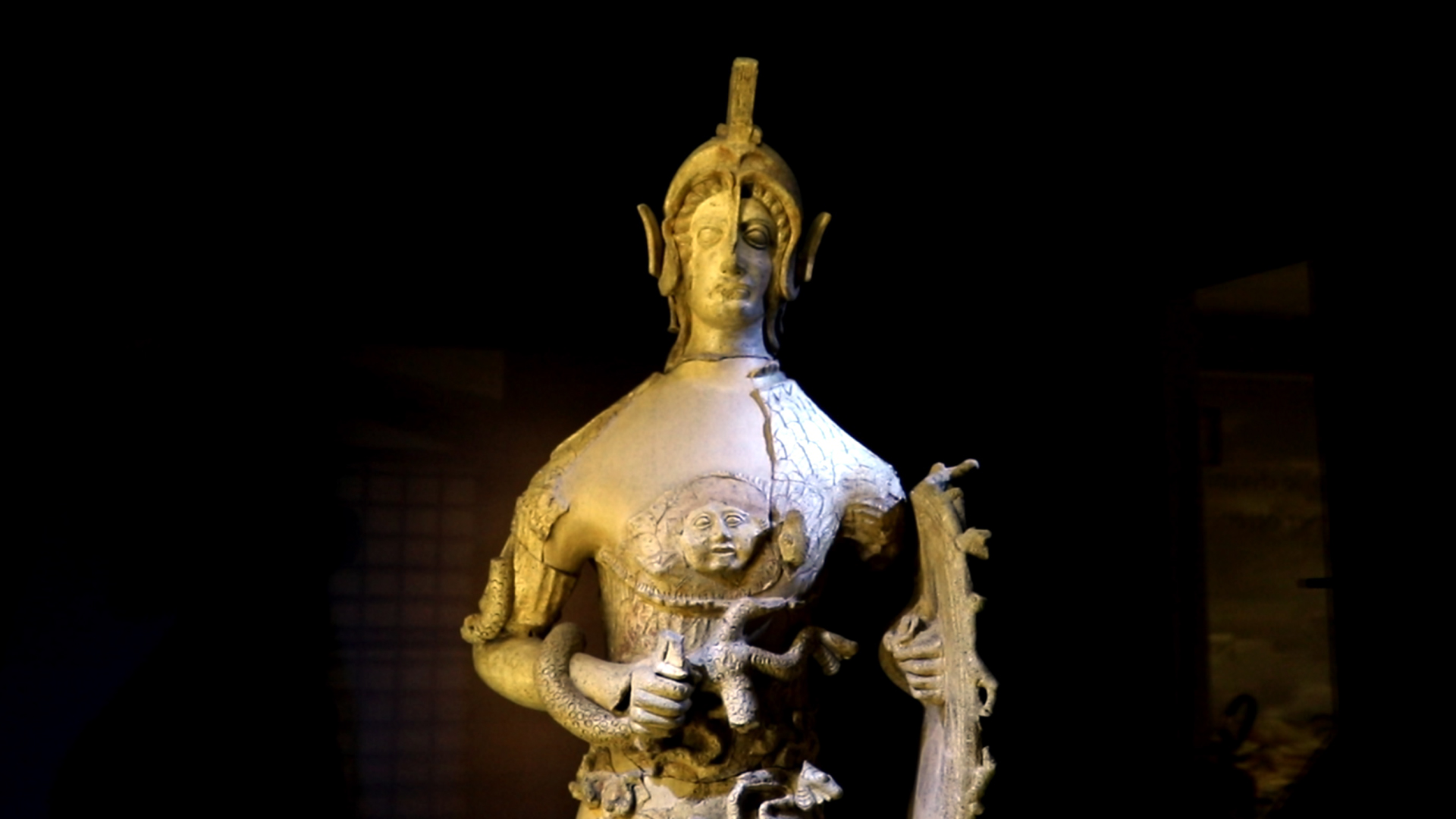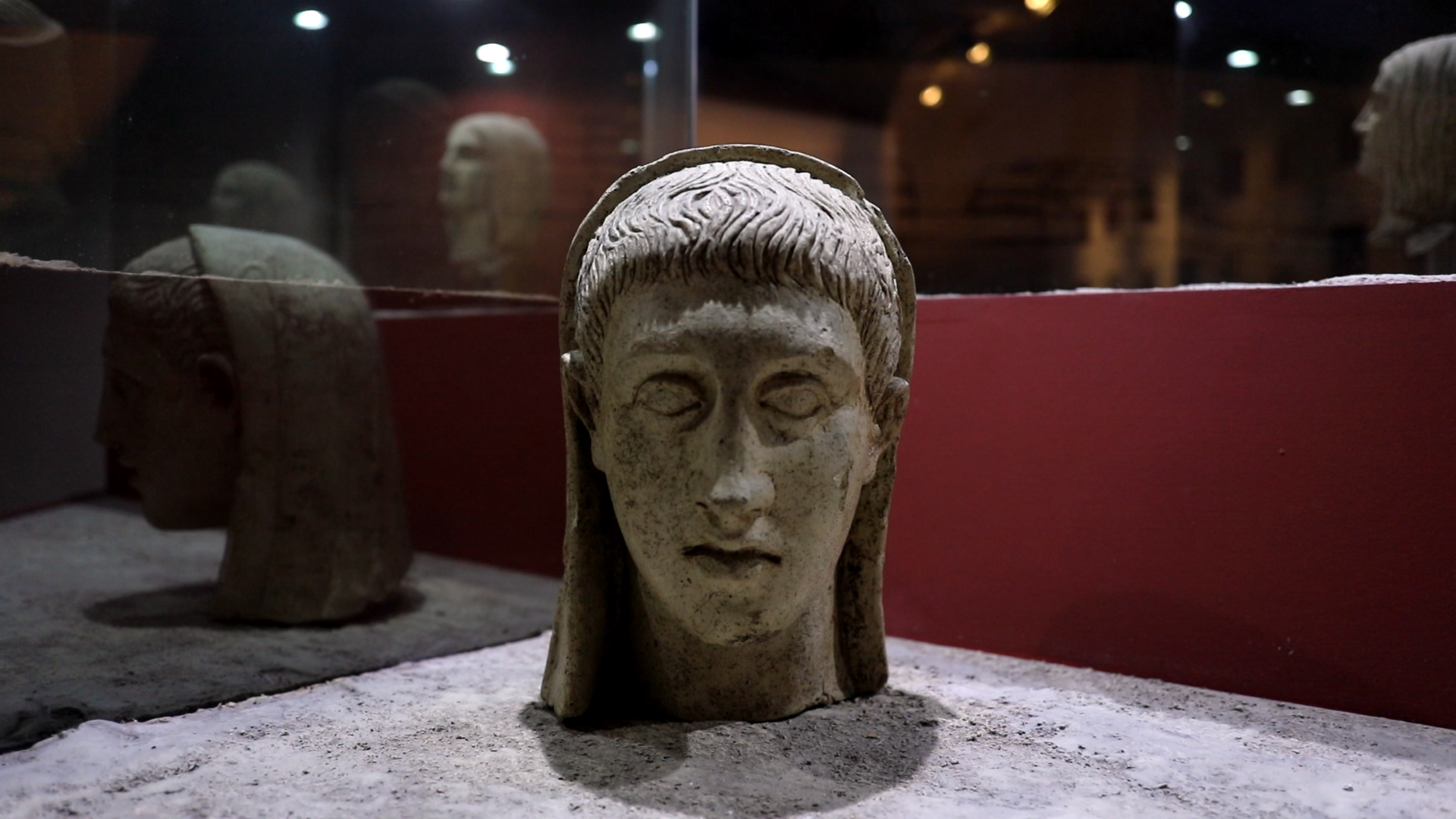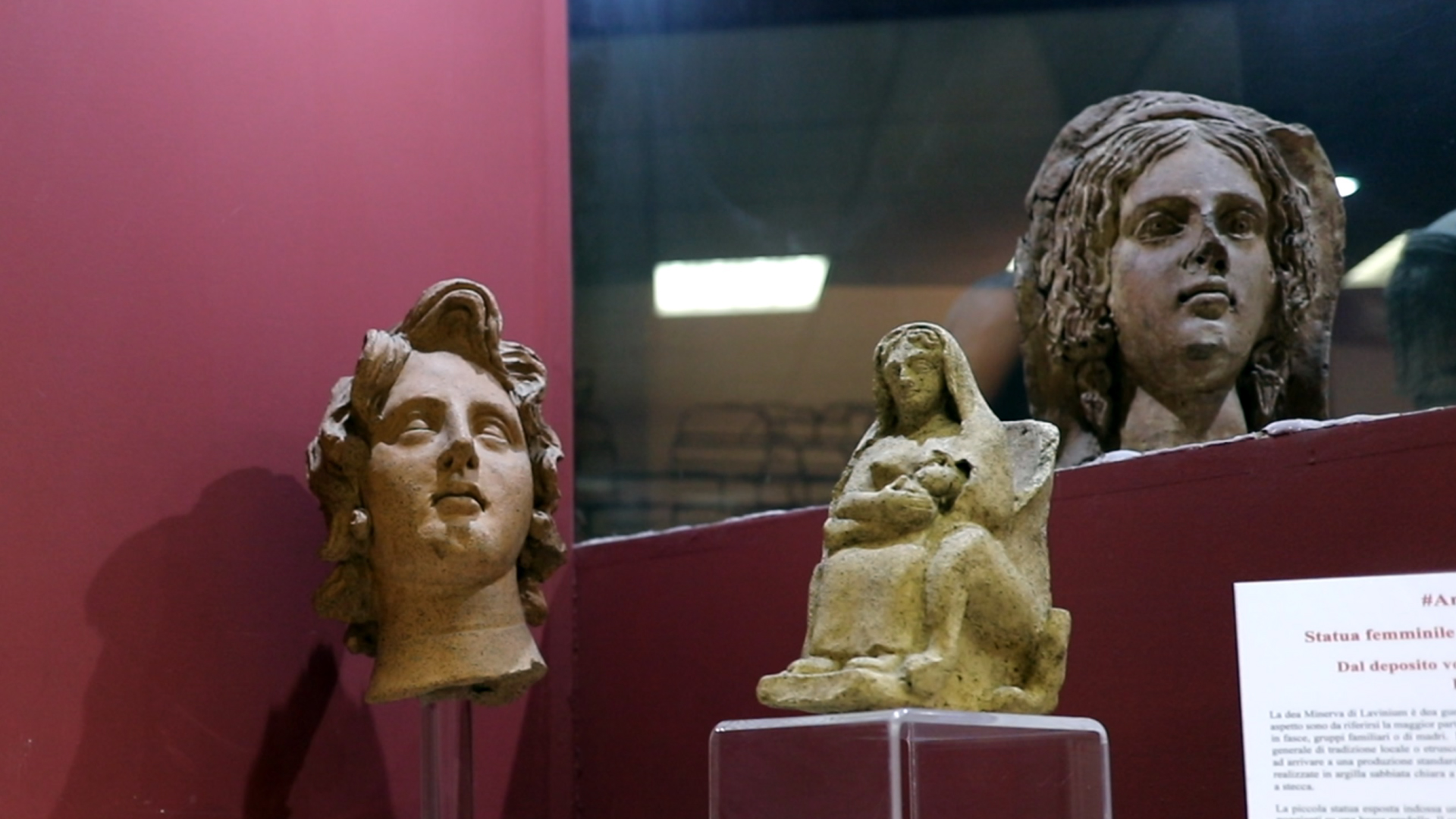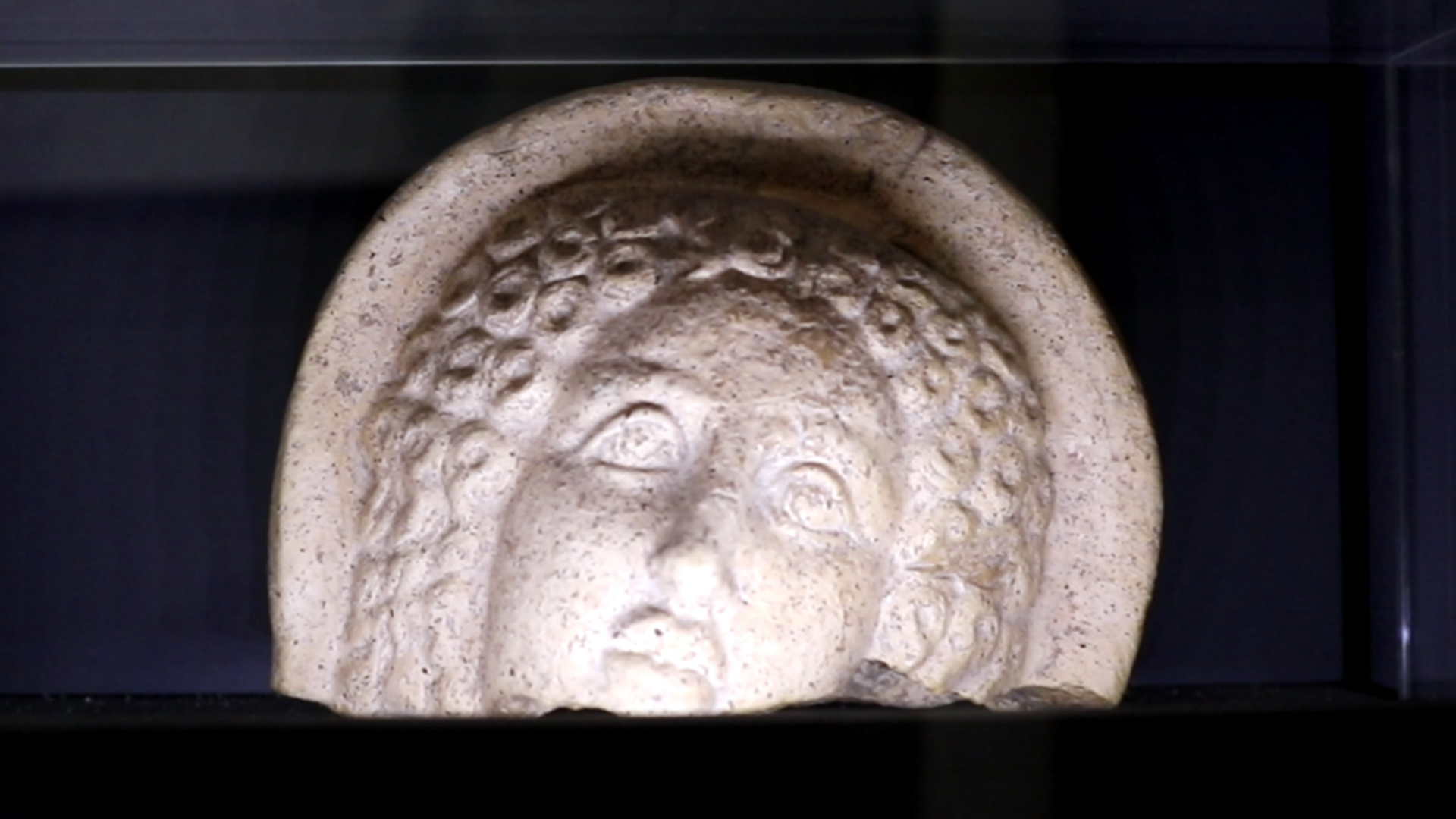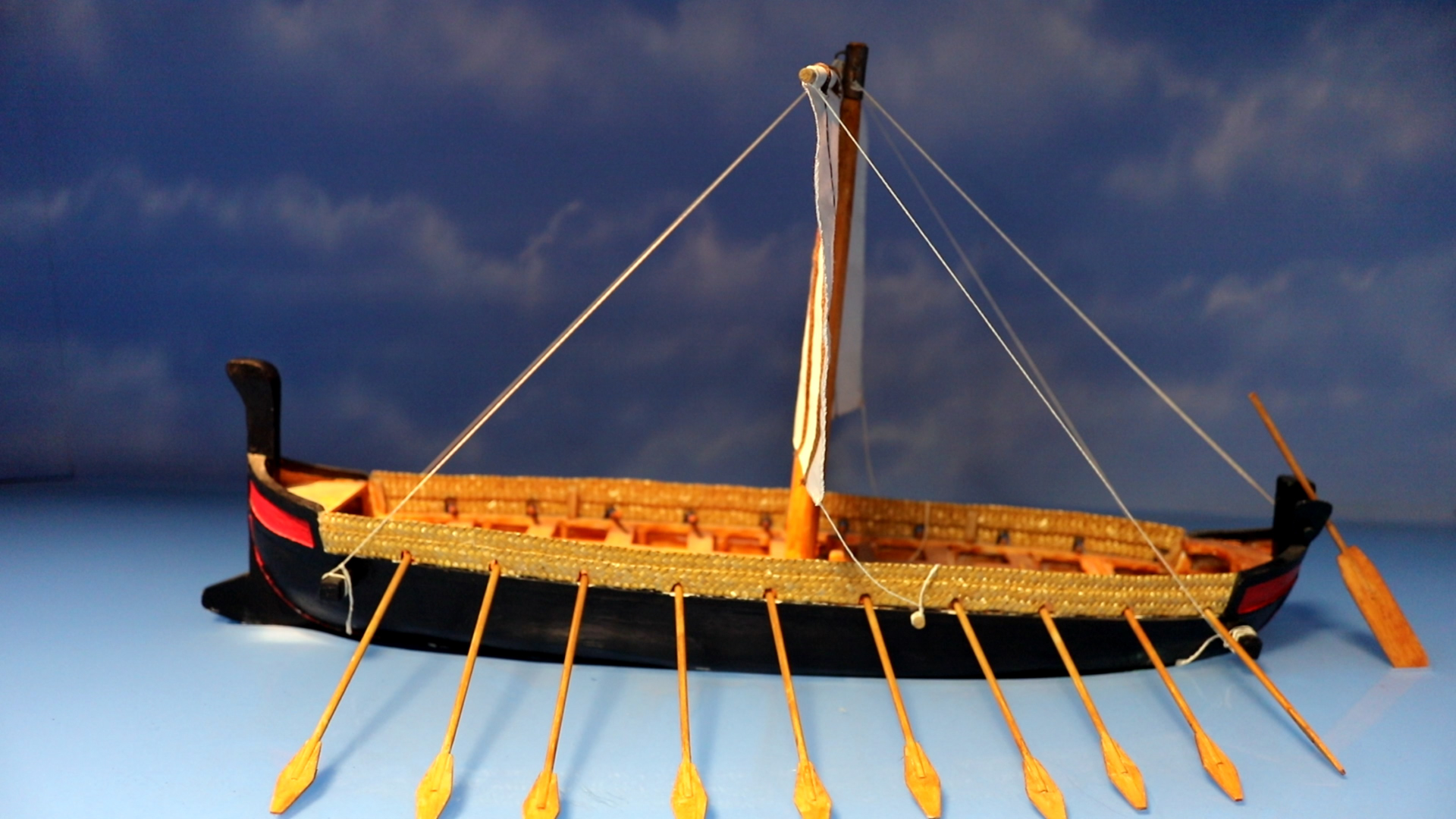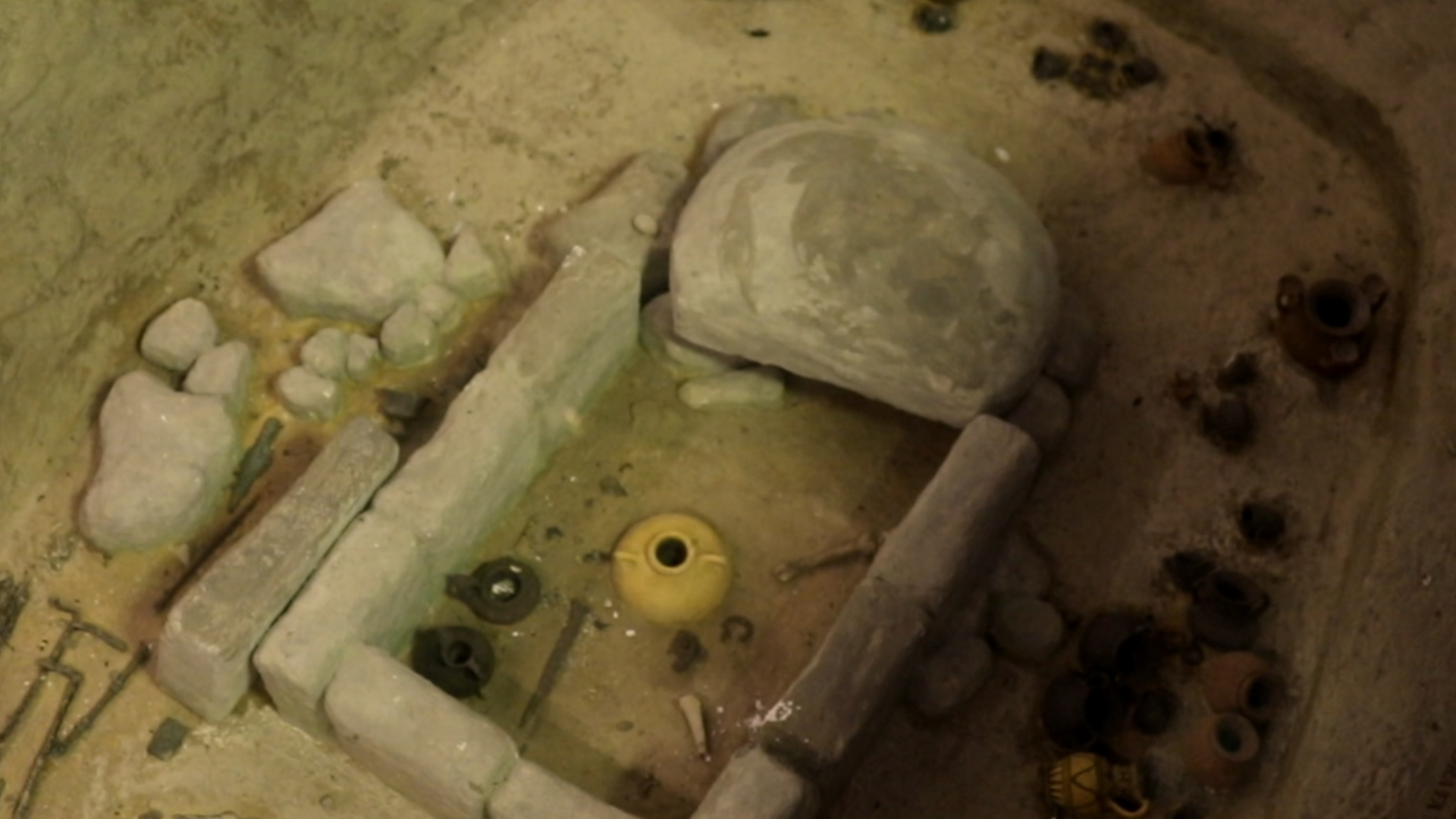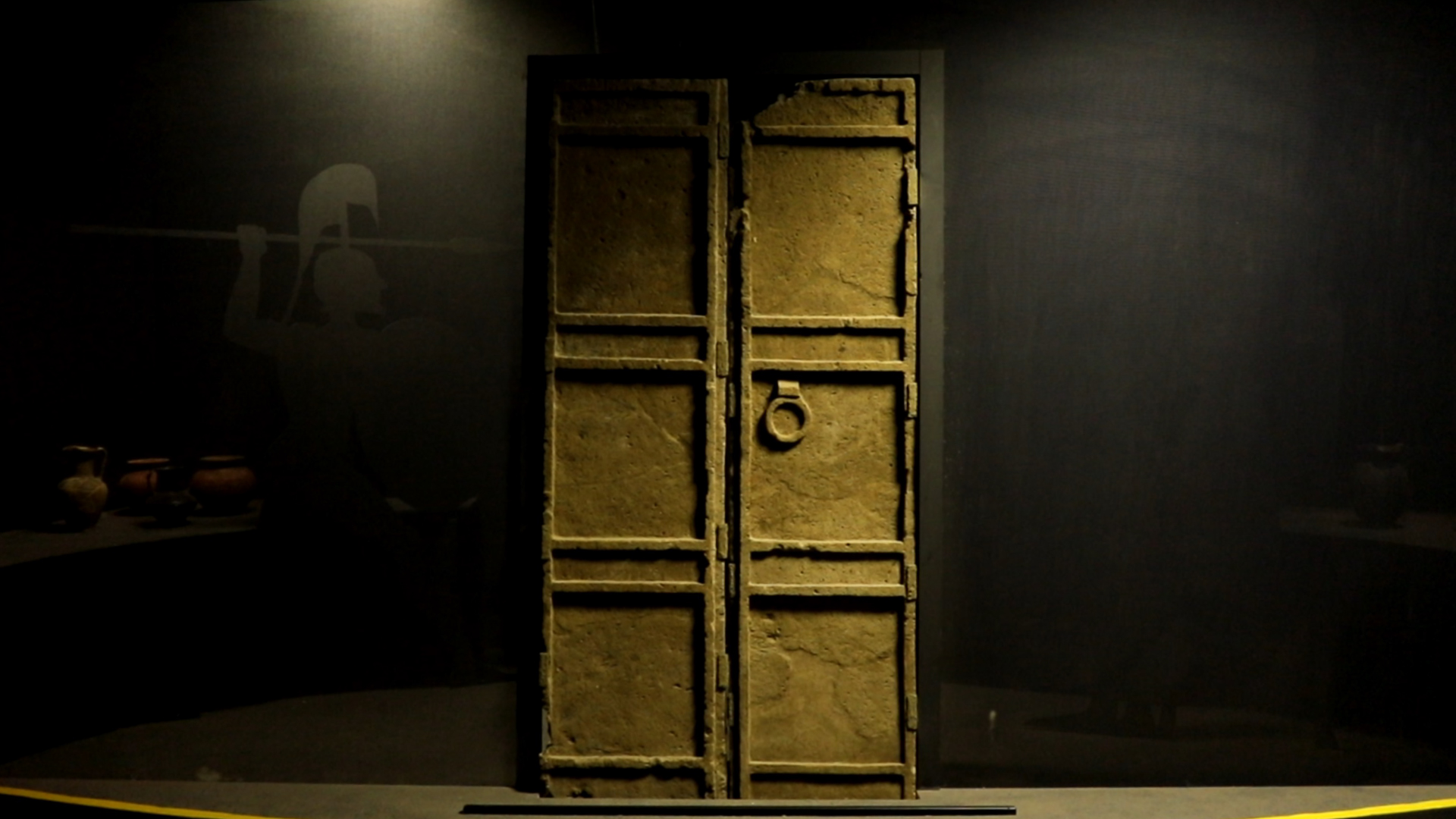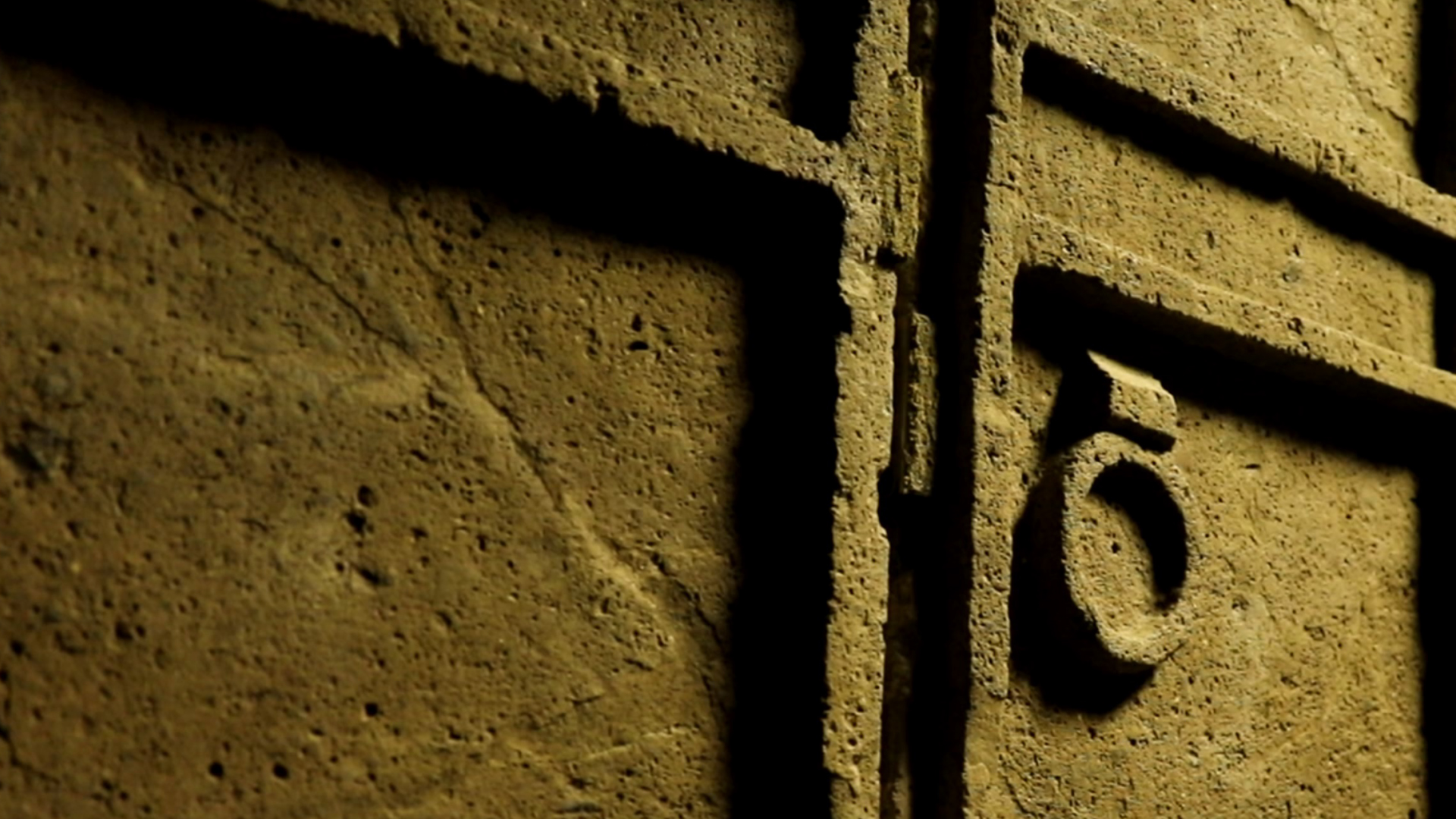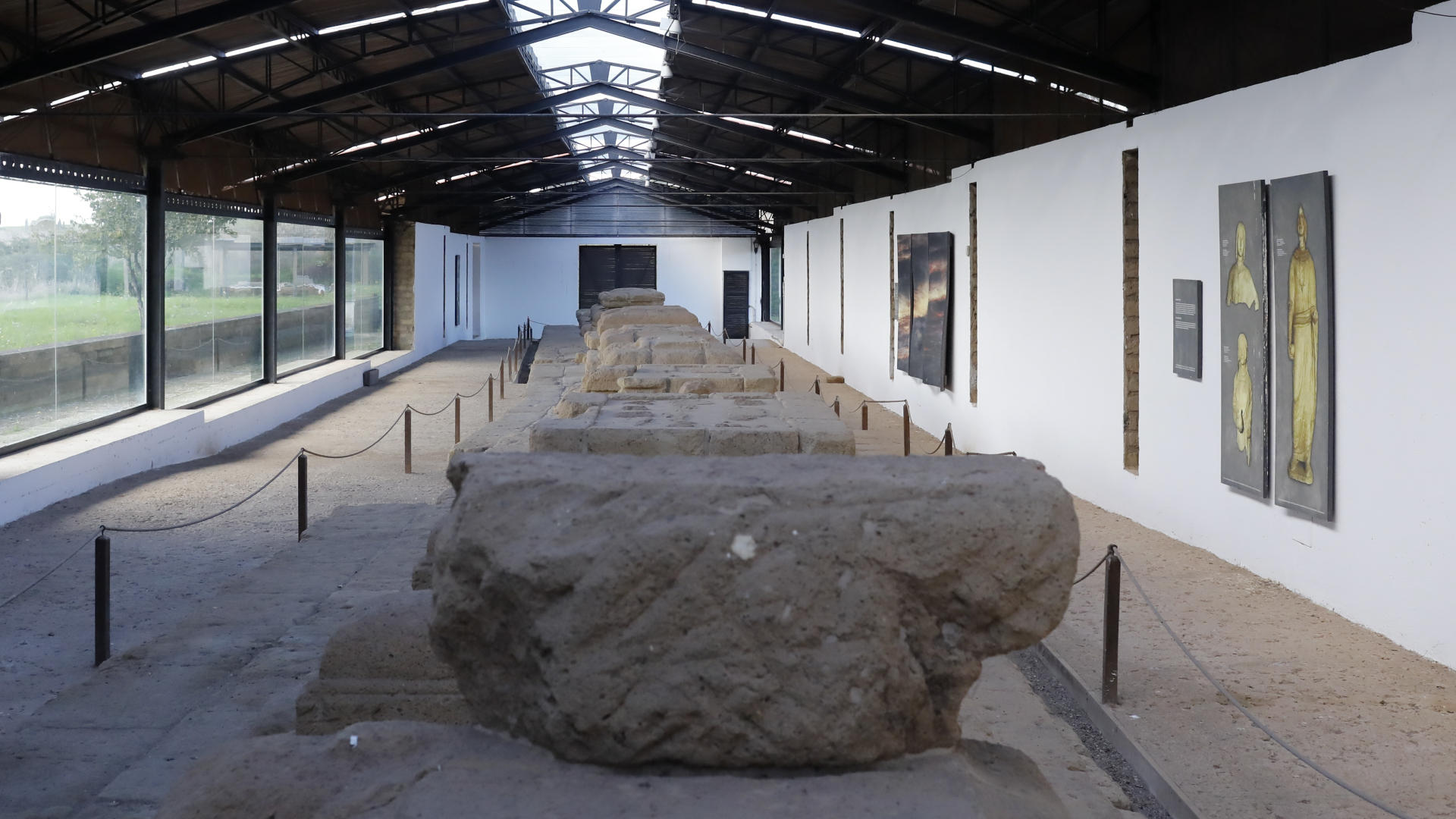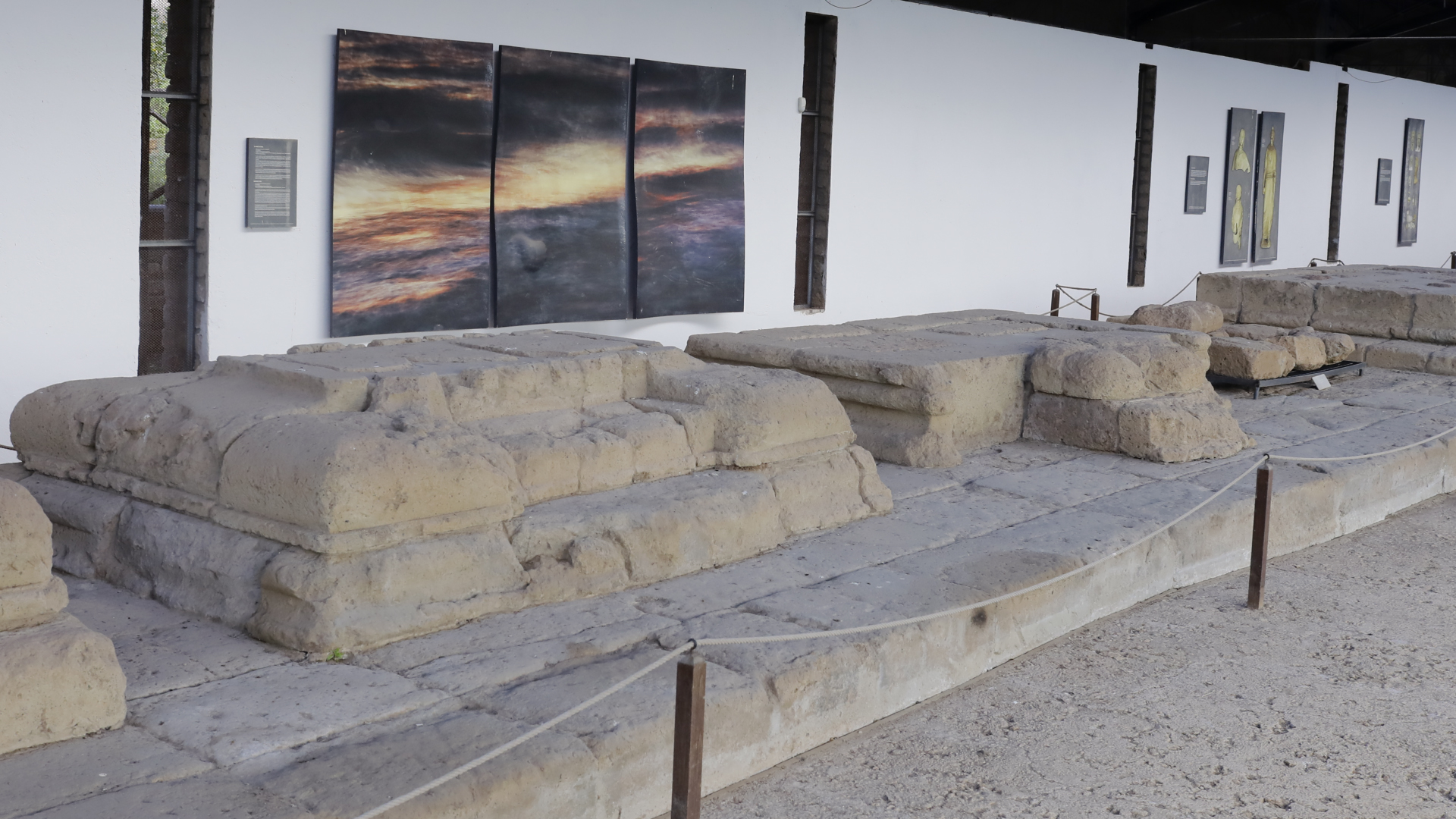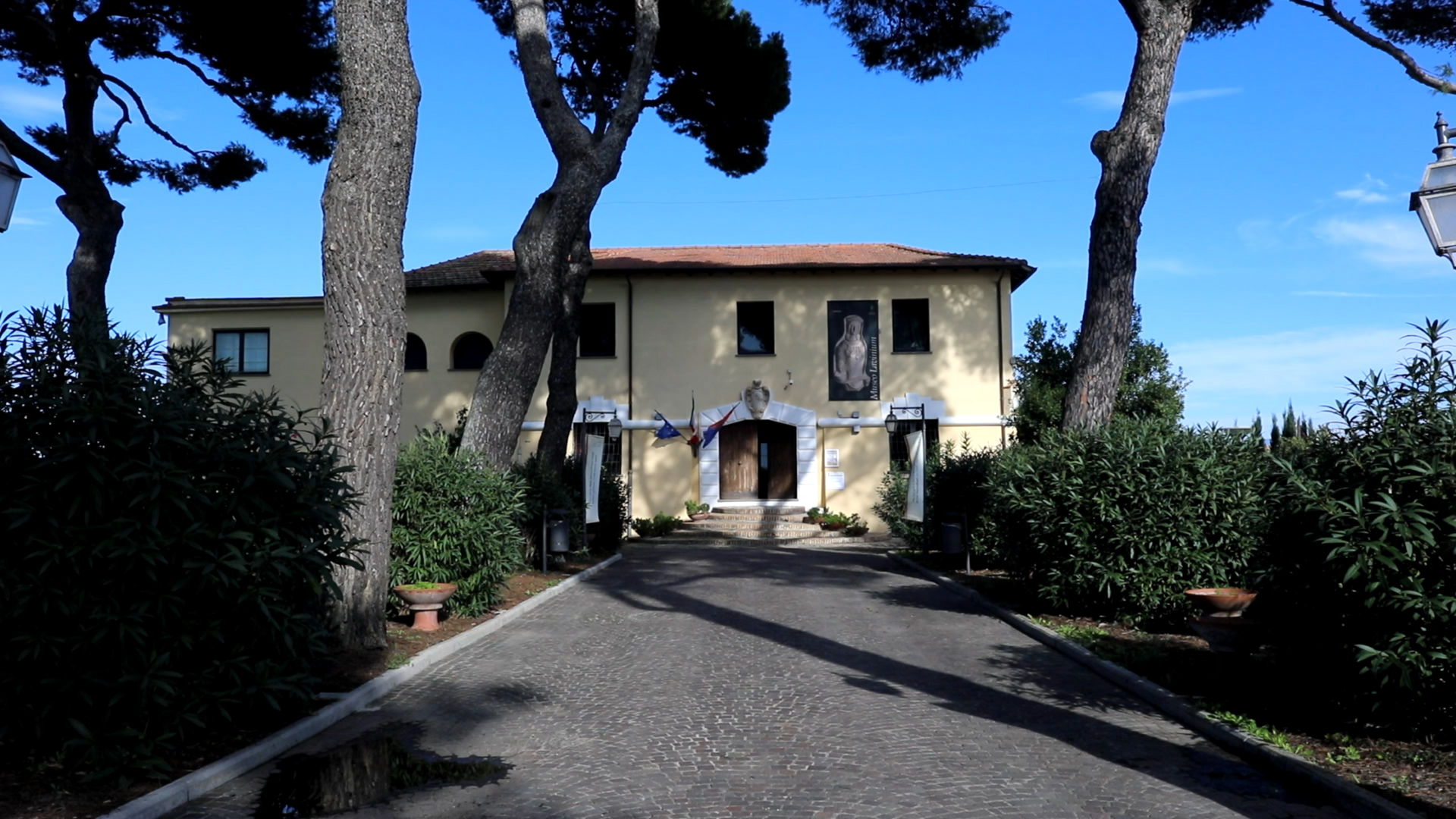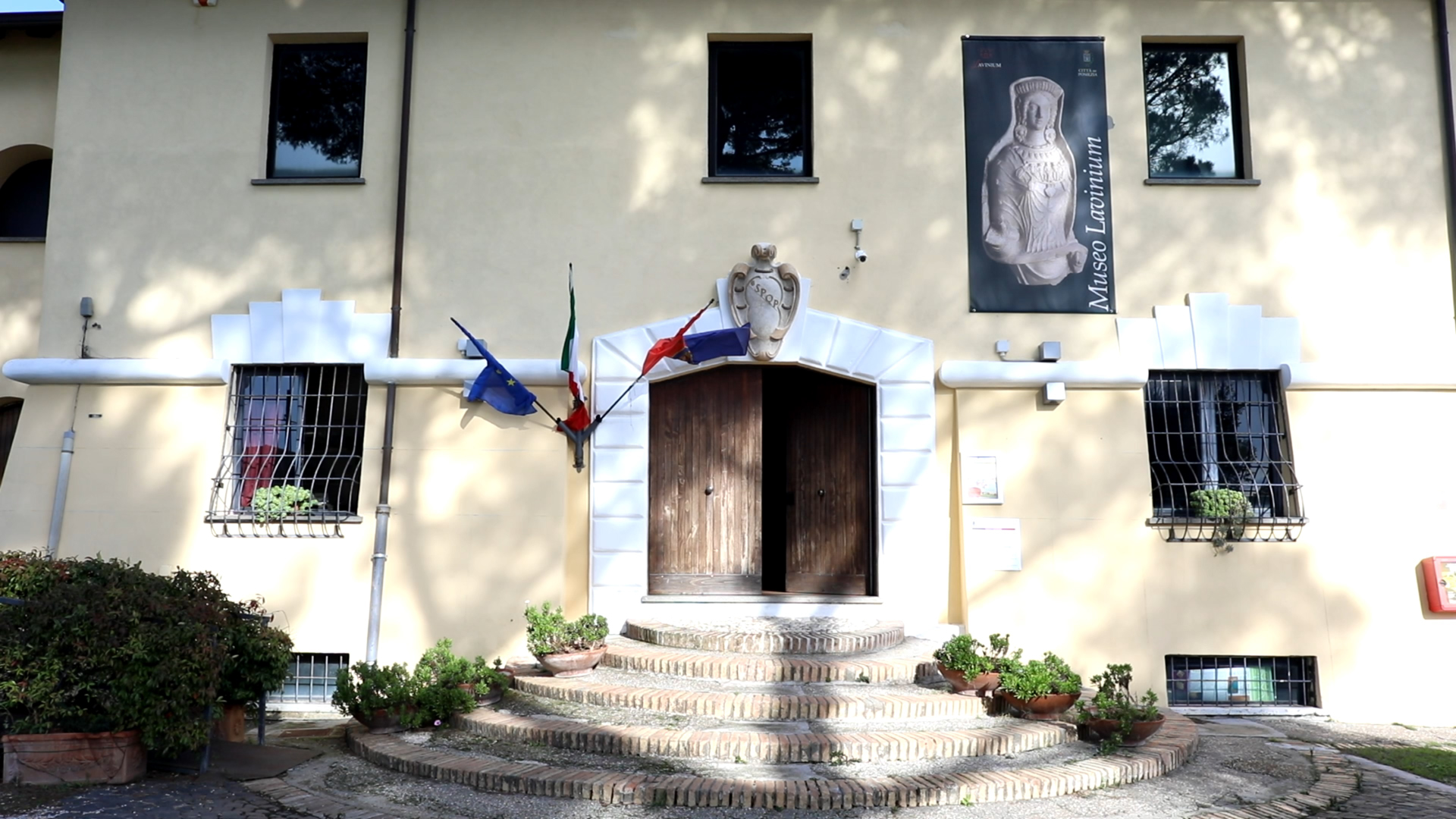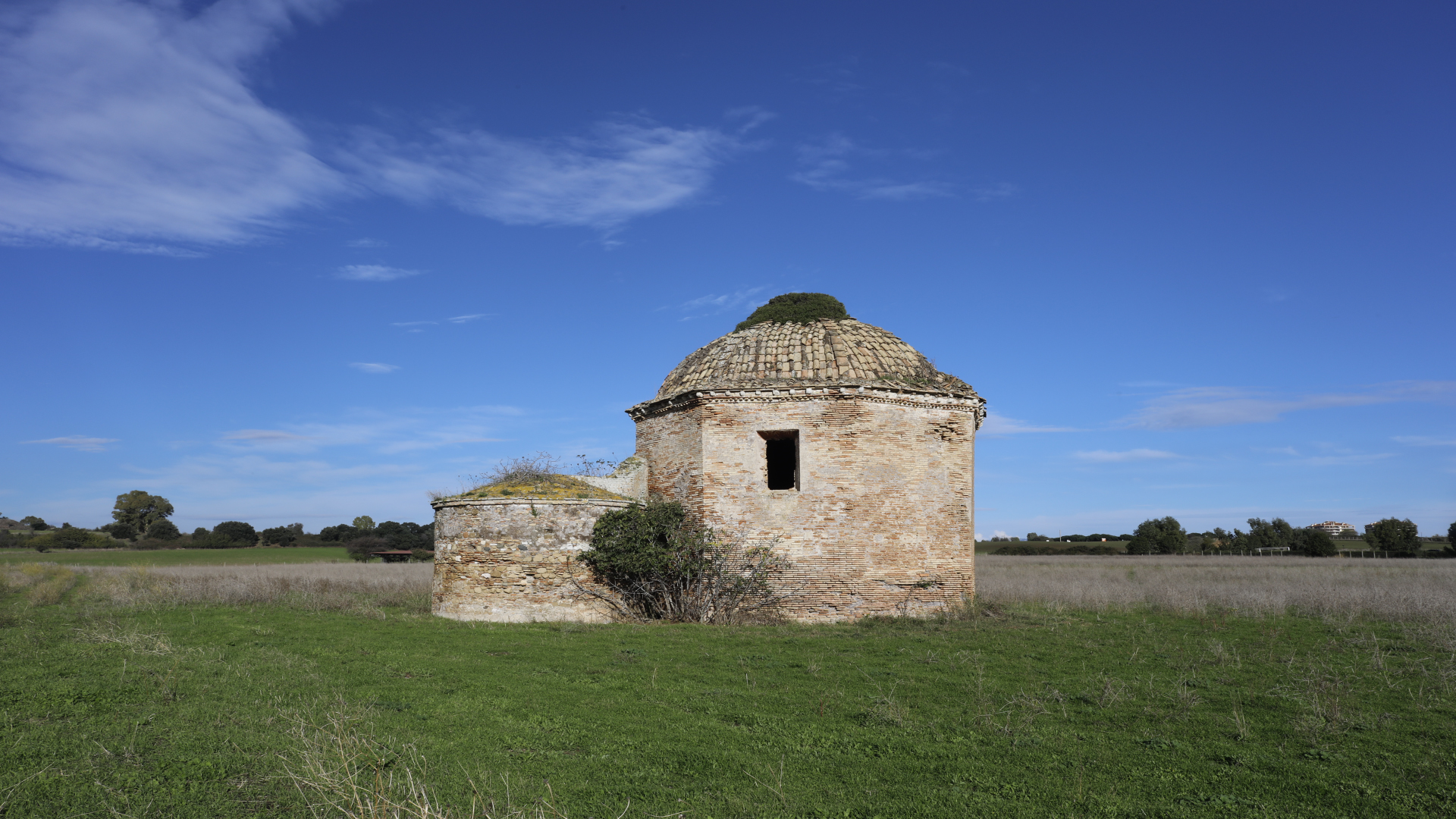LAVINIUM
An ancient city, combining history and myth
THE ANCIENT SETTLEMENT
The ancient city of Lavinium was situated about 28 km from Rome and 4 km from the sea. Today, it is widely agreed that the acropolis, the highest and most prestigious part of this remote settlement, dating back to the Bronze Age and the early Iron Age, was located on the site of the present-day village of Pratica di Mare.
In the 6th century B.C. the city reached its peak urban and economic development, occupying the entire plateau and establishing important trade relations, especially with colonies from Magna Graecia, thanks to the presence of the lagoon port located near the present Torvaianica.
Lavinium was located at the centre of an important road axis, and impressive monuments have been found near it, such as the Sanctuary of the Thirteen Altars, the tumulus burial mound also known as the Heroon of Aeneas – a memorial to the Trojan hero – and the Sanctuary of Sol Indiges.
Pratica di Mare as we know it today, which stands on the high ground occupied in antiquity by the acropolis of Lavinium, is a precious monumental and agricultural area still intact within the area of Pomezia and Torvaianica, not far from Rome.
THE ARCHAEOLOGICAL AREA
The archaeological area of Lavinium houses the large sanctuary known as the Sanctuary of the Thirteen Altars and the Heroon of Aeneas.
The Sanctuary of the Thirteen Altars is one of the most important archaeological testimonies of the ancient city of Lavinium. Built around the middle of the 6th century B.C., to the south of the city, it consists of a monumental row of altars, all rigorously oriented towards the east, whose architectural features testify to the intense commercial relations with the Greek colonies in southern Italy.
The altars were built in different periods, probably in groups of three or four, and each one has interesting features. Research, still in progress, has not clarified to which cult this important sacred place was dedicated.
Not far from the Sanctuary of the Thirteen Altars, stands the so-called Heroon of Aeneas, a memorial to the Trojan hero. This sacred place is a funerary monument, built during the 7th century B.C., intended to house the body of an illustrious man, perhaps the first king of Lavinium.
Like many important tombs of this period, the burial was covered by a mound, and in addition to containing the deceased and his personal belongings, there was also a rich set of grave goods consisting of vases and metal objects and a chariot. The burial mound was described by ancient historians as the tomb of the common father of the Latins, later identified with Aeneas.
The Museo Civico Archeologico Lavinium (Lavinium Archaeological Museum) carries out an intense work of rediscovery and valorisation of the historical and archaeological heritage of this area. Located on the outskirts of the city of Pomezia, the museum and the archaeological area tell a story of almost three millennia through numerous finds.
THE MYTH: AENEAS AND THE ORIGINS OF ROME
According to ancient authors, Lavinium was founded by Aeneas, who arrived on the coast of Latium after his flight from Troy and his long wanderings in the Mediterranean Sea.
Again according to the myth, Lavinium was also the place of origin of the Roman people, with the spread of the tradition according to which Romulus, the founder of Rome, descended from the same lineage as Aeneas, as heir to the kings of Alba Longa, a city founded by Ascanius, the son of the Trojan hero.


